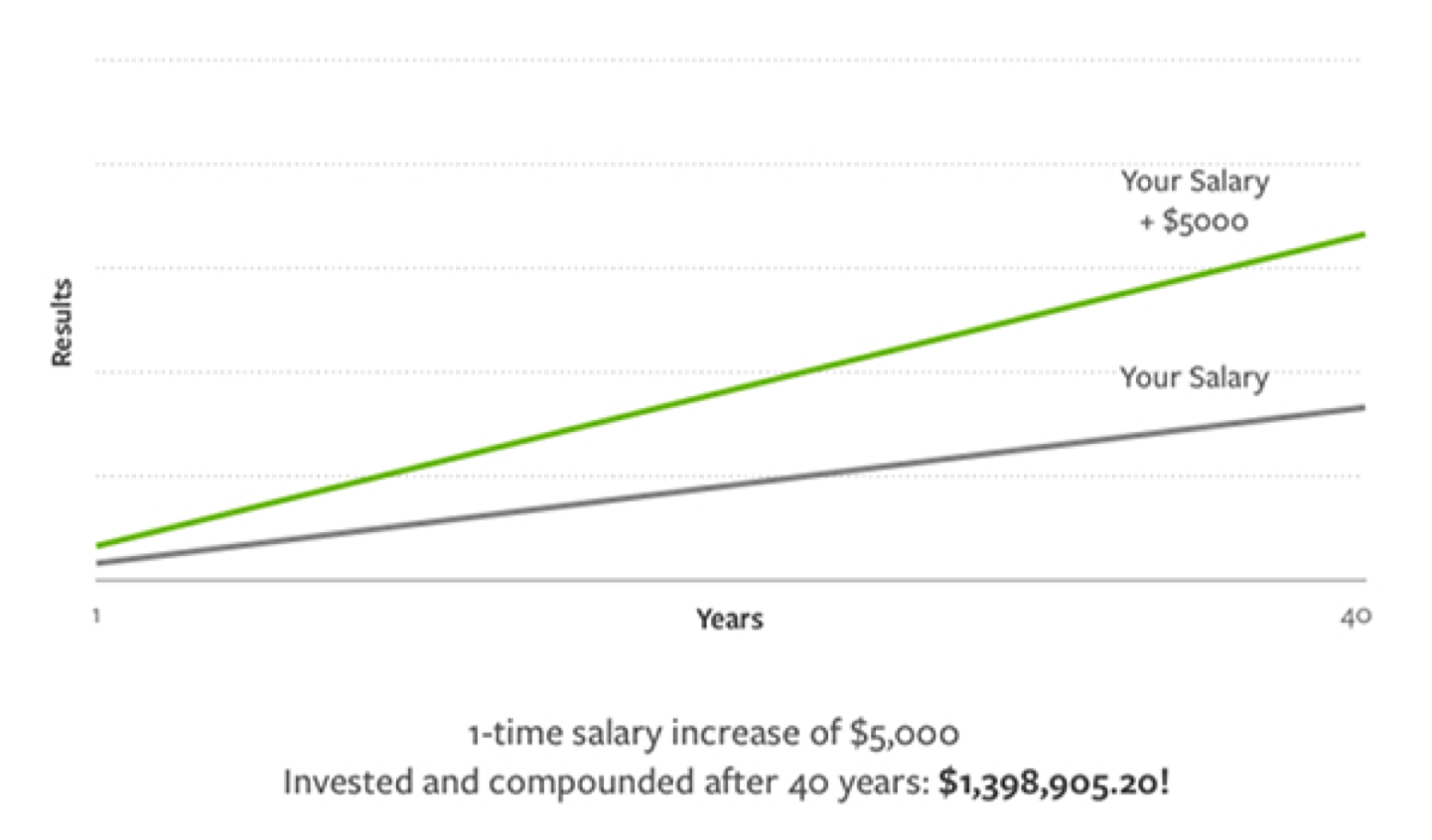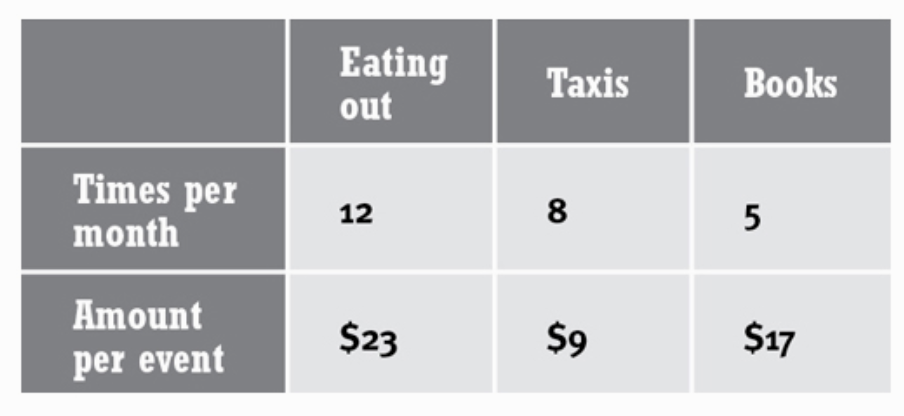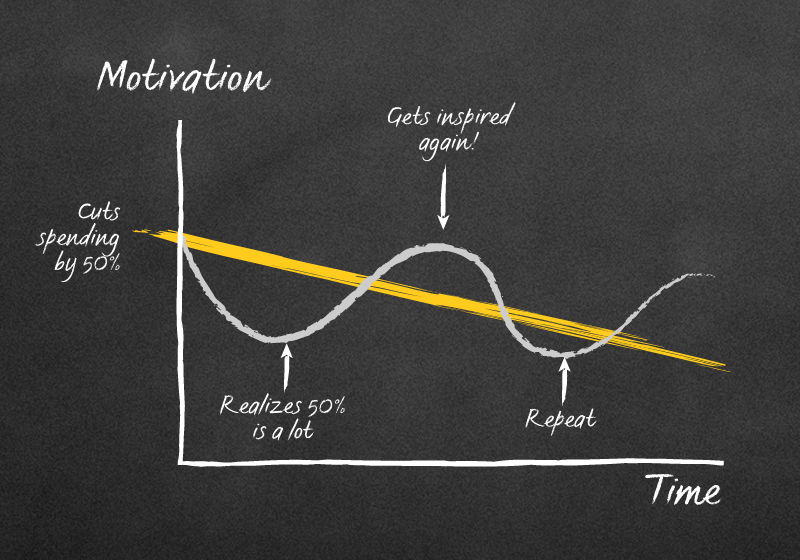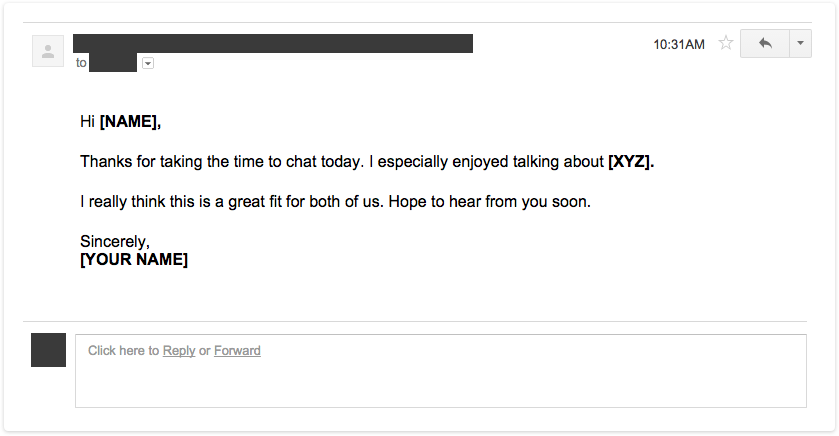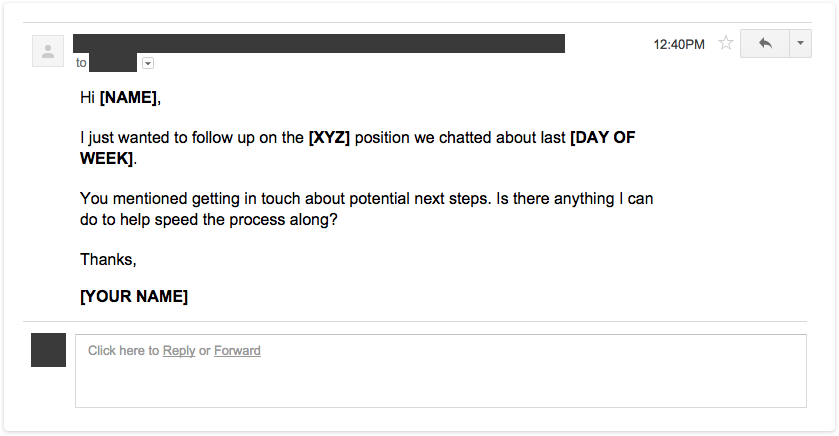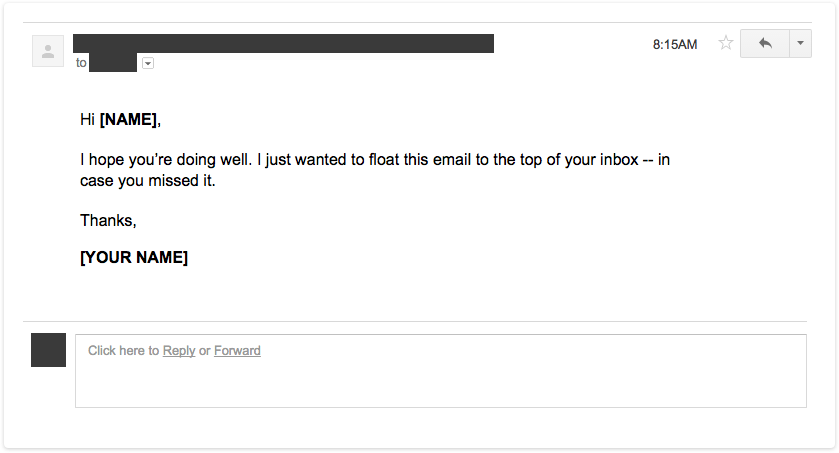Today, I’m going to share two strategies I’ve used to get traffic to my websites from extremely high-traffic blogs like Lifehacker and sites like the Wall Street Journal.
These strategies are the same ones I used to 10x my blog traffic in just one year.
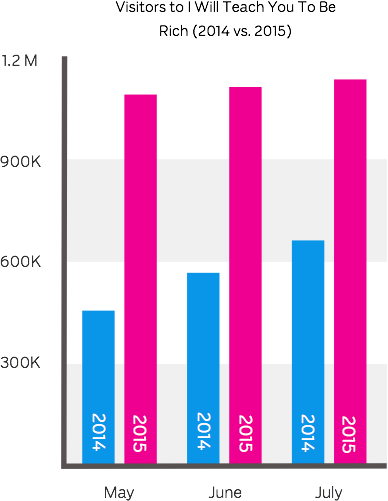
IWT traffic 2014 vs 2015
This advice for getting more traffic doesn’t just apply to blogging either. You can use it to get more customers or clients, get more followers on social media, or snag your dream freelance job.
The best part: Once you learn the two systems for getting traffic to your blog, you can start using them today.
How to get traffic to your blog in 2 steps
On a recent forum where both new and experienced bloggers share tips for getting traffic, SEO, etc., most of the discussions were debating minutiae about meaningless changes they could make to their blog to get more readers.
“What SEO plug-in should I use?” one asked. “Does anyone think I should change my blog’s name???” another wondered.
After 20 minutes of reading, I had to close the window because I was getting so frustrated.
Look, here’s a simple chart of what matters for getting traffic for your site:
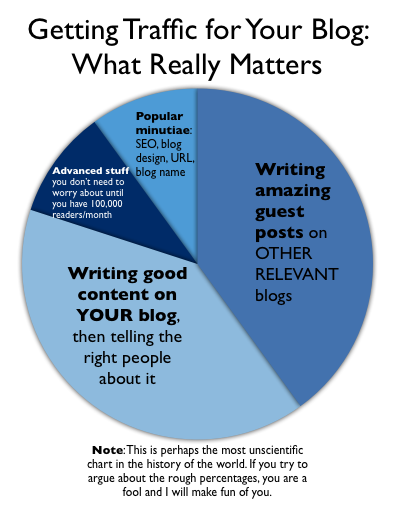
Basically, there are only two ways that really matter to get traffic to your website without spending a fortune in advertising:
- Writing really good content. What I call “remarkable content” – and then telling the right people about it.
- Writing amazing “guest posts.” Articles for other relevant blogs with more traffic than you.
Let’s take a deep look at each now and give you a framework to accomplish them.
Use the Remarkable Content Strategy to get traffic to your blog
You’ve seen awesome writing on the web, right? Work that creates reputations and builds businesses.
Maybe you read people like Tim Ferriss, Neil Patel, Brian Clark, or one of the other big-name bloggers who regularly produce high-caliber material you can’t get enough of.
Their amazing content turned them into respected experts, helped them build a loyal fan base, and opened up huge opportunities in their business and personal lives. And it all started with great content.
The real question is: Can you do the same?
There is a proven system for creating remarkable content. A system that helps you churn out amazing articles, blog posts, and emails – anytime you want.
I spent dozens of hours documenting everything I know and turning it into a free guide to creating remarkable content. It’s already got hundreds of thousands of new visitors to my website, and it sends more traffic every day.
For now, I want to share just one tactic that will help you craft top-performing content that floods your blog with traffic. To leverage this tactic, you just need to answer three questions:
#1: What can I create that would be irresistible to people?
This is content that people see and immediately need to read.
Did you catch that? It’s not enough that they want to read it. They feel so compelled to click on your article that it’s like they need to read it.
To do this, you need to know your audience better than they know themselves. This involves a lot of research and, gasp, talking to people.
Over at GrowthLab (IWT’s sister site about entrepreneurship), we call this the Immersion Strategy. It’s the alternative to diving into writing a blog post with nothing in mind — and getting zero traffic as a result.
While there are a lot of different ways to go about it, the best way is by going to the places online and in real life where your readers might “hang out.”
Luisa Zhou, a former student of mine, did this, and it helped net her $1.1 million in less than a year.
From Luisa:
“I started spending all my free time hanging out where my potential clients were online (free Facebook groups) and directly engaging with them by sharing valuable content and answering any questions I could about advertising.”
Is there a place online your readers like to hang out? Maybe a subreddit, Facebook group, or message board?
What about meetups in real life? What groups or organizations are they a part of?
Find them. Spend some time talking, and most importantly, listening to them. You’ll discover topics and pain points that your reader will want answered.
When you write content your readers care about, they’ll happily devour your work.
#2: How can I make it so valuable that they’ll write me to say, “Thanks, this really helped me”?
Great content solves a problem.
Think about one of the best-selling books of all time, How to Win Friends and Influence People. That book solves a huge problem for people: making friends. And it presents the information in a way you can use right away. It includes word-for-word conversation scripts and action steps for you to follow, which makes the content immediately helpful to you.
Great content is about more than just the information. It’s about getting your audience the results they want.
So include ALL the information your readers need — without overwhelming them.
Another one of my students did an excellent job of this. While most bloggers rehashed vague networking advice, she distilled her knowledge into specific action steps her readers could follow. Then, she went a step further and included word-for-word email scripts to try. If you wanted to network with VIPs, everything you needed was in that one post. Making it easy for your readers to implement your ideas is critical.
#3: What do I really feel I have to share with the world?
If you care about something, you’re definitely not alone. Someone out there will want to read your writing, especially if you’re passionate about the content and add in your own personality.
Top bloggers don’t hide their beliefs, personality, and quirks. Instead, they create a personal connection with their audience by being themselves.
After all, how boring would I Will Teach You To Be Rich be if I didn’t show my sense of humor and crack a few jokes from time to time?
If your writing lacks a personal touch, people will click away. Open up. Tell a story or two. Include a picture. The more real you are, the more you’ll stand out.
Use the Guest Post Strategy to flood your blog with traffic
Once you write really good content, you’re going to see traffic come into your site. BUT if you really want to flood your blog with traffic, you’re going to have to write remarkable content for another blogger who has more traffic than you.
It’s funny — when you point this out to many new bloggers by saying, “Hey, why don’t you write up something really good and send it to a bigger blogger as a guest post?” many of them quickly make up a bunch of excuses. “Well, uh … I am really busy this weekend” or “I’m in the middle of this really interesting post on how HSBC interest rates changed!” Yeah right, okay.
But it’s not just as simple as deciding to write a guest post. When it comes to high-traffic bloggers, there are very specific ways to approach them so they’ll accept your pitch.
It all boils down to creating a system for creating and promoting your content to these bloggers.
Here’s what that system looks like:
- Strategy and planning (1 hour / week). This is when you research different bloggers and websites you can reach out to with bigger audiences than you.
- Creating new content (2 hours / week). This is crafting content targeted towards specific bloggers.
- Promoting new content (2 hours / week). This is time spent reaching out to those bloggers and websites with your content to see who wants it.
Here’s an example from one of my students (a fitness blogger) on how he breaks that system down for him.

The best part about this system: You don’t even need to have a blog yet — you can just write your article on a Google document and share the link with whomever it is you’re reaching out to.
The point is to get creative and get some traction on other websites, regardless of what stage you’re at.
We’ve already covered writing great content — and if you’re reading this, I’m going to assume you know who the heavy hitters in your field of expertise are. Now I want to show you how you can reach out to them using a proven email strategy called the 1-2 Punch. These are the emails you’re going to be sending to other bloggers and websites that’ll get your foot in the door for guest posting.
Here’s what they look like:
My “1-2 Punch” email scripts:
Email #1: Introduction
Hi NAME,
My name is NAME and I’m a big fan of your work. I especially loved what you wrote about TOPIC because AUTHENTIC REASON.
I’m thinking of starting a website myself, and was hoping I could get some quick advice. The idea is to help AUDIENCE get RESULT. I just wrote my first article HERE, but I’m trying to improve it so that it’s really excellent.
You have a lot more experience than me. If it were you, what do you think would make this better?
– Add more A
– Talk more about B
– Etc.
What do you think? Is this something you feel would resonate with your readers if done right?
-Ramit
Email #2: Follow-up
NAME,
Thanks so much for your feedback. I’m going to make those changes right now. If it’s OK with you, I’ll send you an update when it’s finished.
One more thing: This is a bit further down the line, but would you be at all interested in having me contribute a guest post to your site once I have everything up and running?
It would really help me get the ball rolling and I think your readers would love it. You can even use this post if you like it.
Let me know — thanks!
-Ramit
Here’s why these emails work:
- Ben Franklin Effect. People love helping each other — and when they help you once, they’re much more likely to help you again. This is called the Ben Franklin Effect and it’s at the core of what makes these emails so effective.
- Not spammy. You’re adding value to them and their website. By doing so, they’re going to be much more inclined to add value to you.
- Thoughtful. These emails show that you’re not just some wannabe internet marketer shooting off boilerplate emails. Rather, you’re showing them that you’ve put effort into knowing who they are and what they want.
Who could apply this strategy? 3 examples
Like I said, this works for bloggers and many other areas of business:
- You’re a new blogger who wants more traffic: If you’re a blogger and you’re looking to grow traffic, put yourself in the mind of bloggers with large readerships: They’re busy, they have huge egos, and they need to constantly post new, interesting stuff to satisfy their readers’ voracious appetites for content.
Could you write one piece of excellent content for them? As an example, here were the results of Nora Dunn’s guest post for my site, which drove nearly 100,000 pageviews in 72 hours. I invited her to have a regular guest spot on I Will Teach You To Be Rich.
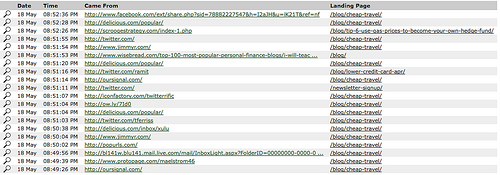
- You want to break into an industry: Let’s say you read fashion magazines and really want to break into the industry. The magazine needs fresh perspectives, especially things that haven’t been done (think Money Diaries for a magazine, for example). How could you help them?
- You just started a new company and need customers: How about if you’re starting a business on Christmas ornaments, and you aren’t sure how to get traffic to your website. The first thing I would do is record some interesting videos for other Christmas sites and give them away for free.
How to get hundreds of thousands of new visitors using the Remarkable Content and Guest Post strategies
I’ve written up a detailed post with the tactics for writing successful guest posts for high-traffic bloggers. It takes effort to create these articles, but when you do it, you can get hundreds of thousands of new readers and many thousands of new customers for your business.
- Read how: Tactics for writing winning guest posts for high-traffic bloggers (includes examples & screenshots)
Want to grow your blog, and launch an online business people will flock to? Check out my Ultimate Guide to Remarkable Content.
How to get traffic on your blog (in just 2 steps) is a post from: I Will Teach You To Be Rich.
from I Will Teach You To Be Rich https://ift.tt/2xJAvdQ
#money #finance #investing #becomerich
